Heating and cooking stove swede: features of the device and
In this article we will describe how a heating cooking stove a Swede with your own hands can be built using available materials. In addition, we consider the main characteristics of the facility and its operational features.
It is no secret that the heating of small country houses is often hampered by the inability to connect to the central gas main. Of course, instead of an easy-to-control gas boiler, you can install electric heaters that will provide effective control of the temperature parameters of the air in the room. But, unfortunately, the price of electricity needed for heating a country house will be high.

Another significant problem is the lack of free space in small rooms in a country house. However, the heating furnace Swede is characterized by relatively small dimensions with good operating parameters.
The power of such a furnace in the standard version is 5.2 kW with moderate fuel consumption, which allows you to heat a house with an area of up to 50 m ?.
Main characteristics
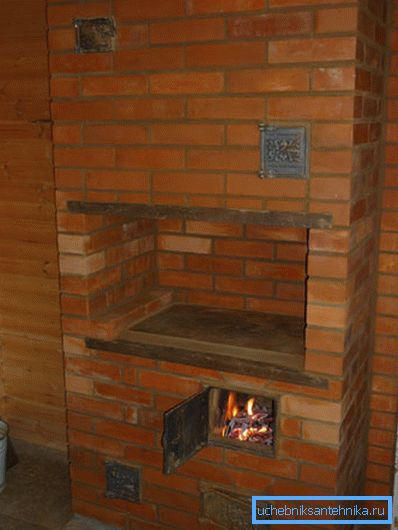
Heating cooking stove Swede is gaining increasing popularity due to the following advantages:
- Multifunctionality due to the combination of heating, hob, niche for drying berries and mushrooms, fireplace, etc..
- Possibility of heating immediately two adjacent rooms. Moreover, there are separate modifications that can immediately warm three rooms.
- Small dimensions in comparison with other modifications of brick kilns.
- Low cost of construction due to simple installation using affordable construction tools.
- Efficiency due to low fuel consumption.
- Aesthetically attractive view of the building, which will fit into the interior decorated in country or chalet style.
Are there any drawbacks to be taken into account when choosing a stove to be built in a country house?
The disadvantages are as follows:
- The need for building skills to build a truly functional stove.
- The need for the arrangement of the chimney, which will pass through the roofing system, and to rise above the ridge of the roof.
- It is enough to make a number of mistakes in the design and construction of the furnace and the result will be poor traction, as well as the penetration of smoke into the living room.
Construction features
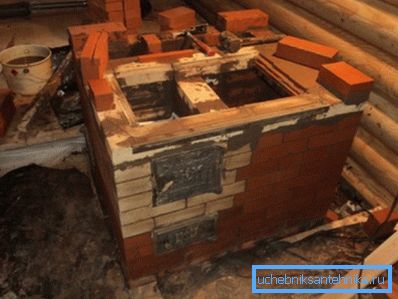
The heating cooking furnace of the type of Swede is characterized by high efficiency, which is explained by the use of a complex system of exhaust gases.
Unlike primitive heating units, in Swede the hot air along with the smoke is not immediately removed to the outside. Smoke, before getting to the exhaust pipe, passes through the maze of channels used in the design of the furnace. Passing through numerous channels, the exhaust gases mixed with hot air release heat, transferring it to the brickwork.
At the end of the cycle, the air passed through the maze is almost cooled at the outlet. This again turns into an advantage, since the chimney does not heat to critical temperatures.
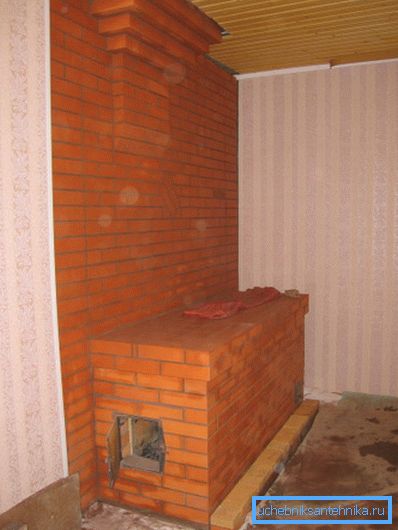
Traditionally, the structure is built as part of an interior partition. In some cases, the building is located in the corner and immediately heats three rooms.
Important: The optimal location is the option when part of the stove, equipped with a hob, goes to the kitchen. This solution is not only convenient, since cooking takes place directly in the kitchen, but also motivated by the fact that the smell of smoke from the firebox practically does not penetrate into the living room.
The oven Swede is used all-season - in the winter heating and cooking, in the summer - only cooking. In order to combine these two functions in a single device when designing a furnace, along with a labyrinth air duct, a direct air duct is arranged. (See also the Exhaust Tubes: Features.)
Two separately located channels are equipped with special valves. When one of the ducts is working, the flap opens, while the same flap on the unused second duct closes.
Recommendations on the device and sizes
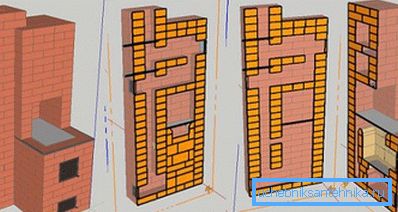
- Construction begins with laying the foundation. The base is laid in two rows of brickwork with waterproofing, not reaching the floor level.
- The standard sizes of the structure are determined by such parameters as the peculiarities of the house, the area of the room, and the growth of the owners. The optimal height at which to install the plate, no more than 11 rows. The recommended laying length is 2.5 bricks.
- The chimney is arranged in such a way that its highest point is about half a meter above the roofing ridge.
- We select the location of the stove so that the front side with a firebox and a hob is located in the kitchen.
- The walls of the fuel compartment lay out fireclay bricks.
- From the ceiling to the upper masonry there should be a distance of at least 35 cm.
Important: If the furnace is being built in a new house, at the point of contact with the overlap around the chimney, we set aside an inch clearance and fill it with flexible thermal insulation, for example with foam or mineral wool. The presence of a compensation gap will avoid pipe shifts in the process of shrinkage at home.
Construction sequence
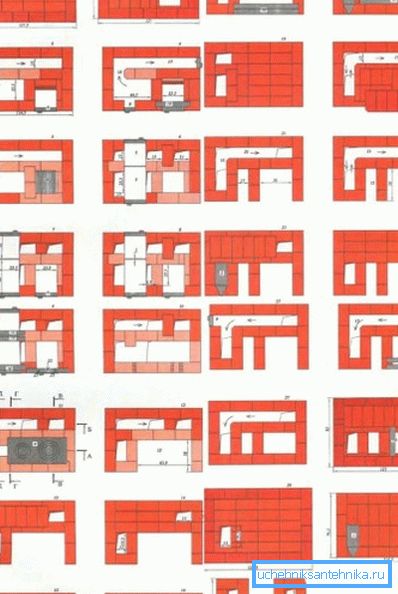
The construction instructions are as follows:
- solid masonry - the first and second row;
- the base of the ash chamber, vertical channels, and bottom heating;
- installation of the door for cleaning and for ash extraction;
- connection of chimney channels;
- installation of overlapping doors, grate and oven;
- we surround fire chamber with fireclay brick;
- we lay the foundation of the firebox and install the door of the fuel department;
- form the channels of the rear wall and isolate the entrance to the vertical chimney;
- laying over the oven and setting the steel corner and stove;
- we form the cooking chamber and vertical gas flues;
- install cleaning doors on the front side;
- overlap the upper ducts and lay out the ledge;
- lay out the base of the chimney.
Conclusion
Now that you know what a stove with a brewhouse is, you can begin building efficient and functional heating in a country house. More useful information can be found by watching the video in this article.